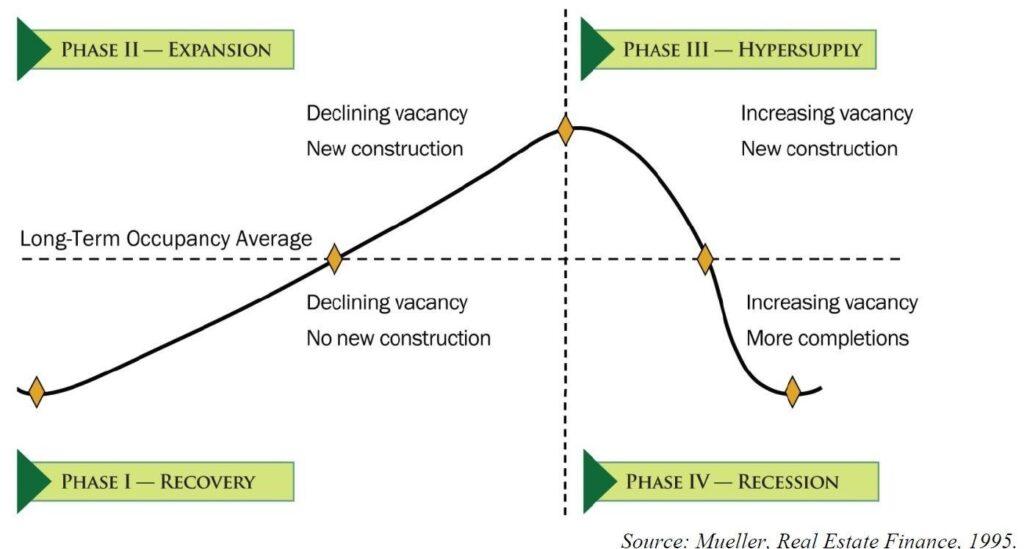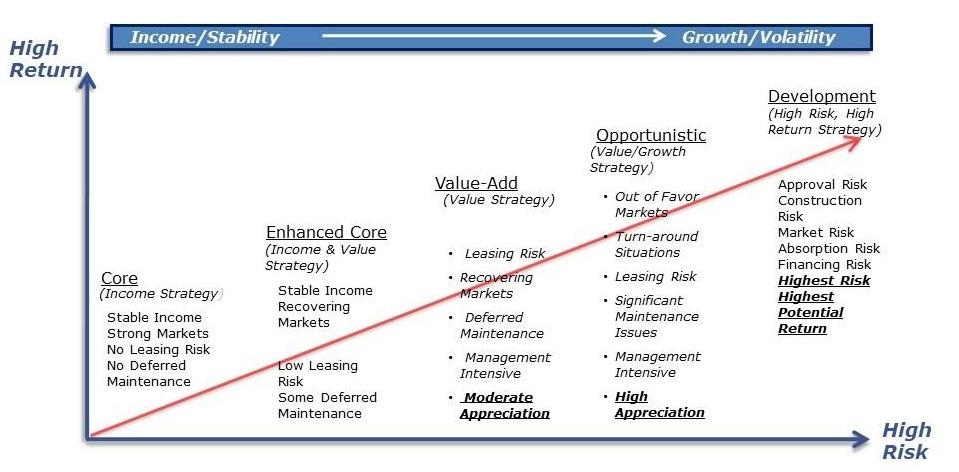How to Evaluate & Manage Real Estate Investment Risk
Risk is the foundation of economic progress. If you avoid risk, or you misunderstand risk, you will inevitably miss economic opportunities.
The key to taking risk with any investment is the ability to identify, control, and manage your risk, especially as it relates to anticipated returns. So how can you identify, control, and manage your risk with real estate investments when the market is constantly changing?
First, you need to know what kinds of risks are prevalent in real estate investing. Once you understand the general risk spectrum in real estate, you can learn how to identify and control your risk, and you will also be better equipped to determine whether a certain investment includes a risk profile that’s just not suitable for you.
Very broadly speaking, there are two primary risks in real estate. The first is market risk, and the second is asset risk
1. Market Risk
Real estate markets are inherently cyclical. This means that while values often increase, they also inevitably decline. From 1985-1995, declining real estate valuations broke the back of almost 1,000 U.S. banks and thrifts during the S&L crisis. Ultimately, the federal government created and funded the the Resolution Trust Corporation to purchase and liquidate almost $400 billion in real estate related assets from these insolvent banks. These banks took excessive market risk on real estate, and they failed as a consequence.
A more recent example of market risk occurred in 2007, just before the great global financial crisis began in 2008. At that time Sam Zell famously sold Equity Office Properties (“EOP”) to the Blackstone Group for $39 billion. The EOP portfolio included 573 office buildings, and Blackstone immediately flipped hundreds of less desirable office properties to other buyers for $27 billion. This moment in 2007 proved to be the peak of the real estate cycle, and Zell and Blackstone were both transferring their risk to others.
How to Visualize Market Cycles & Market Risk
Dr. Glenn Mueller, a prominent researcher and investment strategy consultant for public and private REITs has done extensive, pioneering research on real estate market cycles. Dr. Mueller produced the “Market Cycle Quadrant” to help visualize market risk:
Real Estate Market Cycle Quadrants

Market risk in Phase I of the quadrant is negligible, but market risk increases as you move into Phase II of the cycle. Investing in Phase III of the cycle entails the most market risk, so in this quadrant it pays to invest in assets & locations you know very well and with experienced sponsors.
Always remember that “hyper supply” relates also to availability of capital, not just new construction. Hyper supply of capital often coincides with market peaks and increased market risk, while lack of liquidity can also create opportunities to purchase assets at prices below their intrinsic value. Because of this, we are keen observers of capital flows.
Investors can make money at any point in the cycle, just as Sam Zell and Blackstone did in Phase III of the cycle in 2007. Nevertheless, investing in Phase III and Phase IV of the cycle generally requires more agility, knowledge and experience.
2. Asset Risk
Asset risk is actually another layer of market risk, and understanding these two types of risk can help you develop a strategy around investing in different phases of the market cycle quadrant. The fundamental objective in mitigating asset risk is to purchase assets whose current market value is less than their true intrinsic value and their replacement cost, and to conduct thorough property level due diligence prior to closing.
How to Visualize Asset Risk
As you can see from this risk return graph, asset risk varies by strategy. Lower risk strategies generate lower returns, while the more risky strategies like value-add and development carry higher returns.
Value Add & Development Are Generally Higher Risk Strategies

Development assets entail higher risk because much of the development process (e.g., approvals, timing, costs, availability of capital) is beyond the developer’s control. Investments in core assets are the least risky because these assets are generally existing, stable cash flowing assets in strong locations.
During the financial crisis, many larger investors shifted to core asset strategies in major markets like New York, Los Angeles and Chicago to reduce risk. This created an imbalance in demand for these assets relative to demand for value add and opportunistic investments elsewhere.
Market cycles and sentiment shifts like these can create compelling opportunities to invest in temporarily out of favor locations and assets, which is why investors can be successful in all quadrants of the cycle. In fact, we here at Piping Rock have invested across numerous market cycles, and two of our best performing assets were purchased in Phase III and Phase IV of the quadrant during market dislocations.
